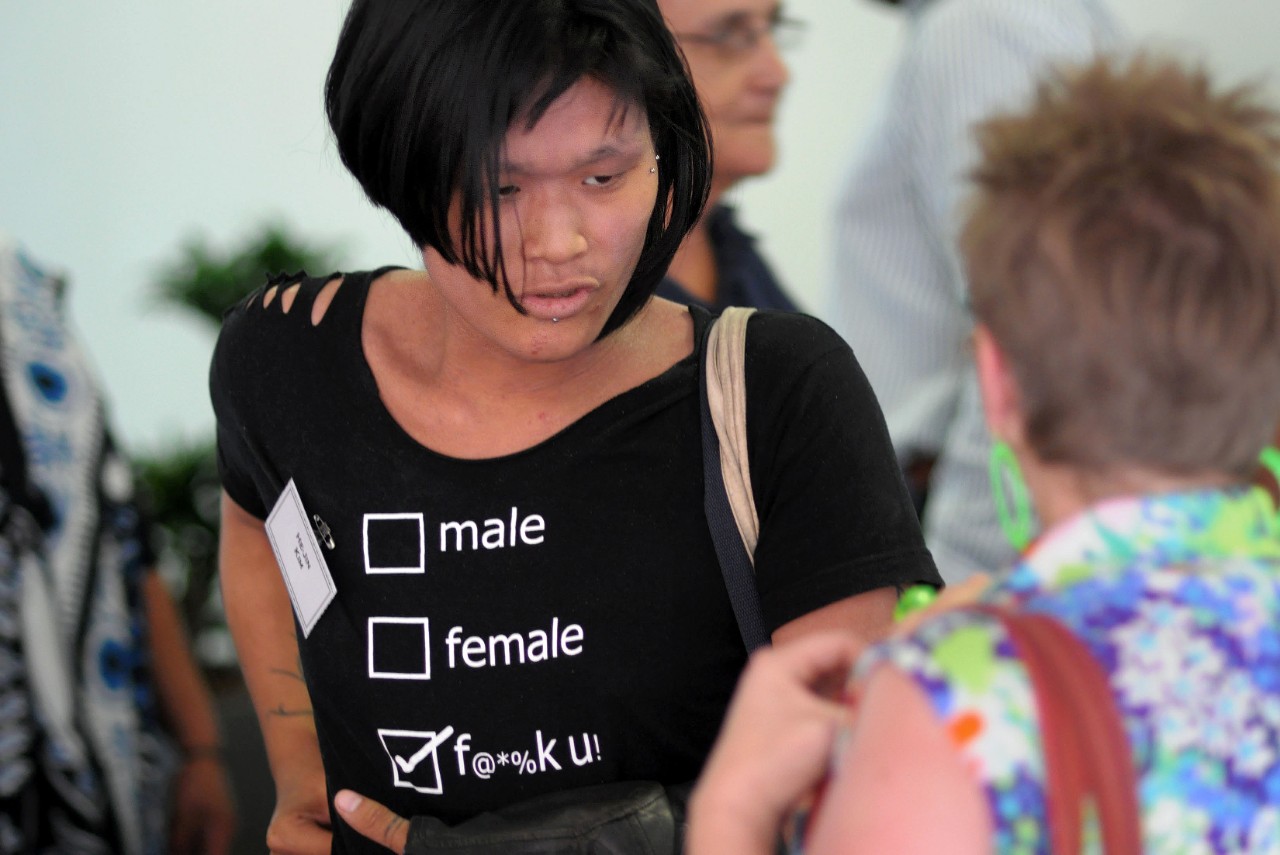Terry Sampson
Well-Known Member
What are "the Intersex"?
What is intersex? | Intersex Society of North America
What is intersex? | Intersex Society of North America
- “Intersex” is a general term used for a variety of conditions in which a person is born with a reproductive or sexual anatomy that doesn’t seem to fit the typical definitions of female or male. For example, a person might be born appearing to be female on the outside, but having mostly male-typical anatomy on the inside. Or a person may be born with genitals that seem to be in-between the usual male and female types—for example, a girl may be born with a noticeably large clitoris, or lacking a vaginal opening, or a boy may be born with a notably small penis, or with a scrotum that is divided so that it has formed more like labia. Or a person may be born with mosaic genetics, so that some of her cells have XX chromosomes and some of them have XY.
Though we speak of intersex as an inborn condition, intersex anatomy doesn’t always show up at birth. Sometimes a person isn’t found to have intersex anatomy until she or he reaches the age of puberty, or finds himself an infertile adult, or dies of old age and is autopsied. Some people live and die with intersex anatomy without anyone (including themselves) ever knowing.
Which variations of sexual anatomy count as intersex? In practice, different people have different answers to that question. That’s not surprising, because intersex isn’t a discreet or natural category.
What does this mean? Intersex is a socially constructed category that reflects real biological variation. To better explain this, we can liken the sex spectrum to the color spectrum. There’s no question that in nature there are different wavelengths that translate into colors most of us see as red, blue, orange, yellow. But the decision to distinguish, say, between orange and red-orange is made only when we need it—like when we’re asking for a particular paint color. Sometimes social necessity leads us to make color distinctions that otherwise would seem incorrect or irrational, as, for instance, when we call certain people “black” or “white” when they’re not especially black or white as we would otherwise use the terms.
In the same way, nature presents us with sex anatomy spectrums. Breasts, penises, clitorises, scrotums, labia, gonads—all of these vary in size and shape and morphology. So-called “sex” chromosomes can vary quite a bit, too. But in human cultures, sex categories get simplified into male, female, and sometimes intersex, in order to simplify social interactions, express what we know and feel, and maintain order.
So nature doesn’t decide where the category of “male” ends and the category of “intersex” begins, or where the category of “intersex” ends and the category of “female” begins. Humans decide. Humans (today, typically doctors) decide how small a penis has to be, or how unusual a combination of parts has to be, before it counts as intersex. Humans decide whether a person with XXY chromosomes or XY chromosomes and androgen insensitivity will count as intersex.
- How common is intersex?
To answer this question in an uncontroversial way, you’d have to first get everyone to agree on what counts as intersex —and also to agree on what should count as strictly male or strictly female. That’s hard to do. How small does a penis have to be before it counts as intersex? Do you count “sex chromosome” anomalies as intersex if there’s no apparent external sexual ambiguity?1 (Alice Dreger explores this question in greater depth in her book Hermaphrodites and the Medical Invention of Sex.)
Here’s what we do know: If you ask experts at medical centers how often a child is born so noticeably atypical in terms of genitalia that a specialist in sex differentiation is called in, the number comes out to about 1 in 1500 to 1 in 2000 births. But a lot more people than that are born with subtler forms of sex anatomy variations, some of which won’t show up until later in life.
Below we provide a summary of statistics drawn from an article by Brown University researcher Anne Fausto-Sterling.2 The basis for that article was an extensive review of the medical literature from 1955 to 1998 aimed at producing numeric estimates for the frequency of sex variations. Note that the frequency of some of these conditions, such as congenital adrenal hyperplasia, differs for different populations. These statistics are approximations.
Not XX and not XY one in 1,666 births
Klinefelter (XXY) one in 1,000 births
Androgen insensitivity syndrome one in 13,000 births
Partial androgen insensitivity syndrome one in 130,000 births
Classical congenital adrenal hyperplasia one in 13,000 births
Late onset adrenal hyperplasia one in 66 individuals
Vaginal agenesis one in 6,000 births
Ovotestes one in 83,000 births
Idiopathic (no discernable medical cause) one in 110,000 births
Iatrogenic (caused by medical treatment, for instance progestin administered to pregnant mother) no estimate
5 alpha reductase deficiency no estimate
Mixed gonadal dysgenesis no estimate
Complete gonadal dysgenesis one in 150,000 births
Hypospadias (urethral opening in perineum or along penile shaft) one in 2,000 births
Hypospadias (urethral opening between corona and tip of glans penis) one in 770 births
Total number of people whose bodies differ from standard male or female one in 100 births
Total number of people receiving surgery to “normalize” genital appearance one or two in 1,000 births
Is there a safe place in your synagogue, church, or mosque for the Intersex? If there isn't, don't you think it's about time you make one?
Last edited:


